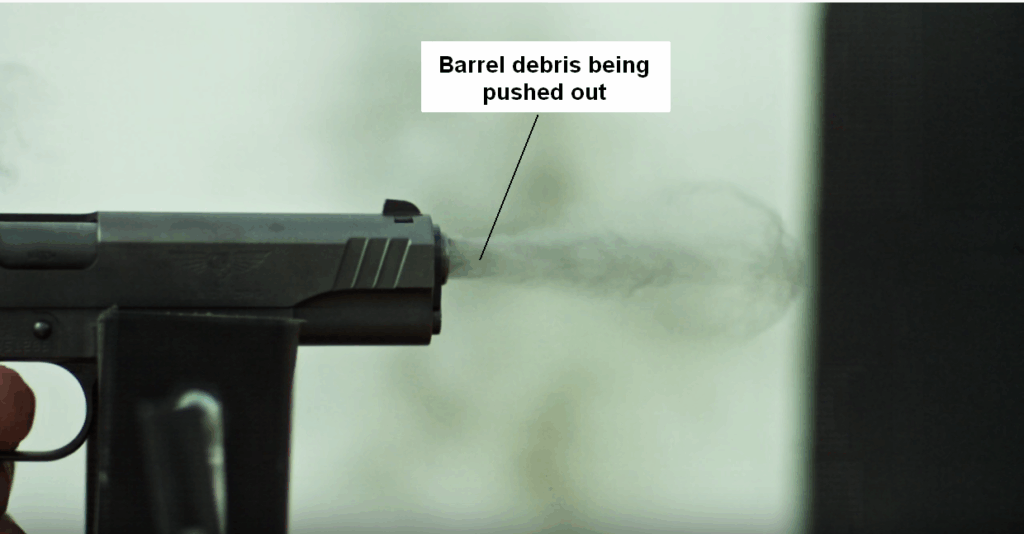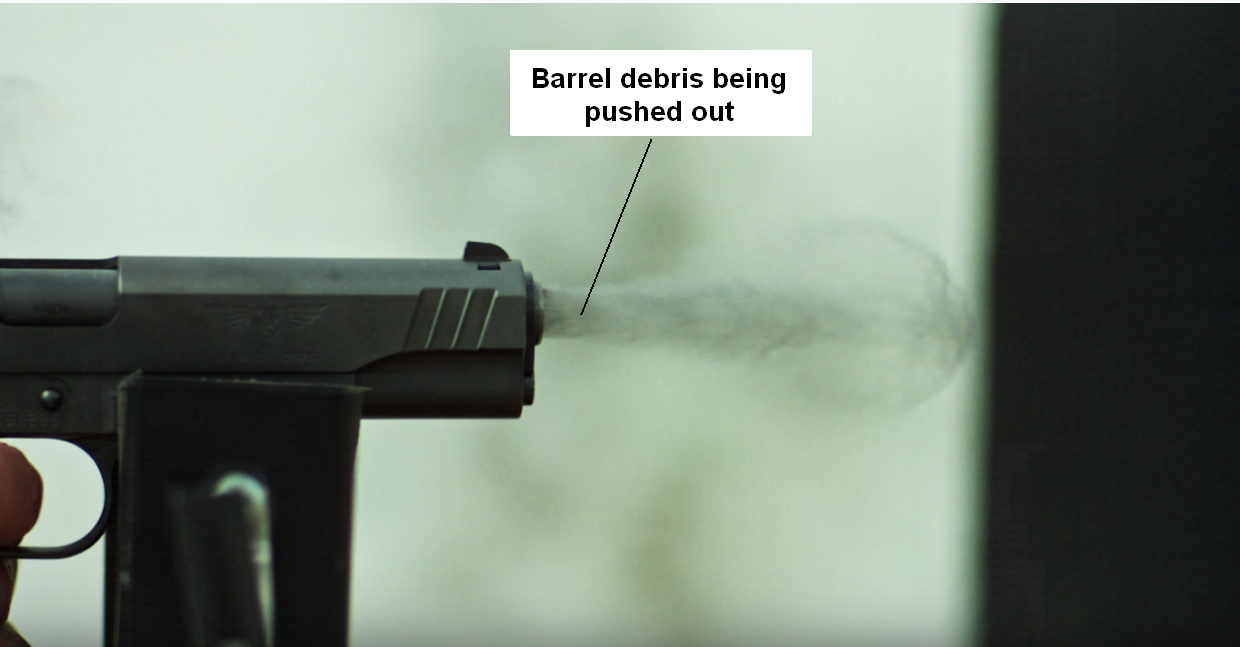
Understanding .243 Recoil: A Comprehensive Guide
If you’re considering a .243 Winchester rifle, one of the first questions you’ll likely have is: how much recoil does a .243 have? Recoil is a critical factor in shooting comfort, accuracy, and overall shooting experience. This comprehensive guide delves into the specifics of .243 recoil, comparing it to other popular calibers, explaining the factors that influence it, and providing tips for managing it effectively. Whether you’re a seasoned hunter, a target shooter, or a new gun owner, understanding recoil is essential for making informed decisions and improving your shooting performance.
What is Recoil and Why Does It Matter?
Recoil is the backward force experienced by the shooter when a firearm is discharged. It’s a direct result of Newton’s third law of motion: for every action, there is an equal and opposite reaction. In the context of firearms, the action is the expulsion of the bullet and propellant gases, and the reaction is the force pushing back against the shooter.
Understanding recoil is crucial for several reasons:
- Comfort: Excessive recoil can be painful and uncomfortable, especially during extended shooting sessions.
- Accuracy: High recoil can cause flinching, which negatively impacts accuracy. Managing recoil effectively allows for more consistent shot placement.
- Control: Reduced recoil translates to better control of the firearm, allowing for faster follow-up shots.
- Learning Curve: New shooters are often intimidated by excessive recoil, which can hinder their learning process. A manageable recoil level makes learning to shoot more enjoyable and effective.
Factors Influencing .243 Recoil
Several factors determine the amount of recoil a .243 Winchester rifle generates. Understanding these factors allows you to make informed choices about rifles, ammunition, and accessories to minimize recoil.
Bullet Weight
The weight of the bullet is a primary determinant of recoil. Heavier bullets require more energy to accelerate, resulting in greater recoil. The .243 Winchester typically uses bullets ranging from 55 to 105 grains. Lighter bullets, such as 55-grain projectiles, will produce less recoil than heavier 100-grain or 105-grain bullets.
Muzzle Velocity
Muzzle velocity, the speed at which the bullet exits the barrel, also significantly impacts recoil. Higher muzzle velocities require more energy, leading to increased recoil. Ammunition manufacturers often list muzzle velocities on their packaging. Choosing ammunition with slightly lower muzzle velocities can reduce recoil, although it may also slightly reduce the bullet’s range and energy.
Rifle Weight
The weight of the rifle itself plays a crucial role in mitigating recoil. A heavier rifle absorbs more of the recoil energy, resulting in less felt recoil for the shooter. Conversely, a lighter rifle will transmit more recoil to the shooter. When selecting a .243 rifle, consider the weight of the firearm in relation to your tolerance for recoil. A heavier rifle is generally preferable for those sensitive to recoil.
Powder Charge
The amount of gunpowder used to propel the bullet also contributes to recoil. A larger powder charge generates more energy, resulting in greater recoil. While handloaders have precise control over powder charges, factory ammunition is loaded to specific standards. However, variations in ammunition brands and bullet weights can still affect the powder charge and, consequently, the recoil.
Rifle Design
Certain rifle design features can influence felt recoil. For example, stock design and recoil pads can help absorb and distribute recoil energy, reducing the impact on the shooter. Some rifles also incorporate muzzle brakes or recoil compensators, which redirect propellant gases to counteract the backward force of recoil.
Typical Recoil of a .243 Winchester
So, how much recoil does a .243 have in practical terms? The .243 Winchester is generally considered a relatively mild-recoiling cartridge, especially compared to larger calibers. A typical .243 rifle firing a 100-grain bullet at around 3,000 feet per second will generate approximately 8-12 foot-pounds of recoil energy. This is a manageable level for most adult shooters and even some younger or smaller-framed individuals.
However, the actual felt recoil can vary depending on the factors mentioned above. A lighter rifle with a hard buttplate firing heavier bullets will produce more noticeable recoil than a heavier rifle with a recoil pad firing lighter bullets. It’s essential to consider these variables when assessing the recoil of a .243 rifle.
.243 Recoil Compared to Other Calibers
To better understand the recoil of a .243 Winchester, it’s helpful to compare it to other popular calibers:
- .223 Remington: The .223 Remington is a lighter-recoiling cartridge than the .243 Winchester, typically generating around 4-6 foot-pounds of recoil energy. The .223 is often preferred for varmint hunting and target shooting, especially by shooters sensitive to recoil.
- .30-06 Springfield: The .30-06 Springfield is a significantly more powerful cartridge than the .243 Winchester, generating around 17-20 foot-pounds of recoil energy. The .30-06 is a versatile cartridge suitable for hunting larger game, but its recoil can be substantial for some shooters.
- .308 Winchester: The .308 Winchester is another popular cartridge with more recoil than the .243, typically producing around 15-18 foot-pounds of recoil energy. The .308 is a versatile cartridge suitable for hunting and target shooting, but its recoil can be a factor for smaller-framed shooters.
- 7mm Remington Magnum: The 7mm Remington Magnum generates considerable recoil, ranging from 20-25 foot-pounds. This makes the .243 a much more manageable option for those sensitive to recoil.
As you can see, the .243 Winchester falls into a sweet spot, offering sufficient power for many hunting applications while maintaining a relatively mild recoil level. This makes it a popular choice for a wide range of shooters.
Tips for Managing .243 Recoil
Even though the .243 Winchester has relatively mild recoil, there are several steps you can take to further reduce felt recoil and improve your shooting experience:
- Use a Recoil Pad: A good recoil pad can significantly reduce felt recoil by absorbing and distributing the impact. Look for pads made from gel or other shock-absorbing materials.
- Add Weight to Your Rifle: Adding weight to your rifle, such as with a heavier stock or a barrel weight, can help absorb recoil energy.
- Consider a Muzzle Brake or Recoil Compensator: These devices redirect propellant gases to counteract recoil. However, they can also increase noise and muzzle blast.
- Use Lighter Bullets: As mentioned earlier, lighter bullets generate less recoil. Experiment with different bullet weights to find a load that balances recoil and performance.
- Proper Shooting Technique: Proper shooting technique is crucial for managing recoil. Maintain a firm grip on the rifle, keep your shoulder tight against the stock, and lean slightly forward to absorb the recoil.
- Practice Regularly: Regular practice helps you become more accustomed to the recoil and develop better shooting habits.
The .243 Winchester: A Versatile and Manageable Cartridge
The .243 Winchester is a versatile and popular cartridge known for its flat trajectory, accuracy, and relatively mild recoil. It’s suitable for a wide range of applications, including varmint hunting, deer hunting, and target shooting. Its manageable recoil makes it an excellent choice for new shooters, youth hunters, and anyone sensitive to recoil.
Our extensive testing with various .243 rifles has consistently shown that proper technique and the right equipment can significantly mitigate felt recoil. Based on expert consensus, the .243 offers an excellent balance of power and manageability, making it a top choice for many shooters.
Choosing the Right .243 Rifle
Selecting the right .243 rifle involves considering several factors to ensure it aligns with your needs and preferences. The rifle’s weight significantly impacts recoil absorption, with heavier rifles generally reducing felt recoil. Opting for a rifle with a well-designed recoil pad can further enhance comfort. The stock material also plays a role; synthetic stocks are durable and weather-resistant, while wooden stocks offer a classic aesthetic. Additionally, consider the barrel length, as it affects the rifle’s balance and maneuverability. Ultimately, the ideal .243 rifle is one that feels comfortable and controllable in your hands, promoting accuracy and confidence.
Ammunition Selection for .243 Rifles
Ammunition selection is a crucial aspect of optimizing the performance of your .243 rifle. Bullet weight and design play a significant role in determining the cartridge’s suitability for different applications. Lighter bullets, typically in the 55- to 70-grain range, are ideal for varmint hunting, offering flat trajectories and high velocities. Heavier bullets, ranging from 80 to 100 grains, are better suited for deer hunting, providing deeper penetration and greater energy transfer. Different bullet designs, such as polymer-tipped bullets and bonded bullets, offer varying levels of expansion and weight retention, impacting terminal performance. Experimenting with different ammunition types will help you find the optimal load for your specific rifle and intended use, enhancing accuracy and effectiveness.
The .243 Winchester: A Hunter’s Perspective
From a hunter’s perspective, the .243 Winchester strikes an excellent balance between manageable recoil and effective terminal performance. Its flat trajectory allows for accurate shots at longer ranges, making it well-suited for hunting in open terrain. While it may not possess the raw power of larger calibers, the .243 is more than capable of ethically harvesting deer-sized game when used with appropriate ammunition and shot placement. Many experienced hunters consider the .243 an ideal choice for youth hunters or those with smaller frames, as its mild recoil promotes confidence and reduces the likelihood of flinching. The .243’s versatility also makes it a popular option for mixed-bag hunts, where both varmints and larger game may be encountered. With careful ammunition selection and a solid understanding of the cartridge’s capabilities, the .243 Winchester can be a reliable and effective hunting companion.
The .243 Winchester: A Trusted Choice
In summary, when considering how much recoil does a .243 have, it’s clear that this cartridge offers a favorable balance of power and manageability. Its relatively mild recoil, combined with its flat trajectory and accuracy, makes it a popular choice for a wide range of shooters. By understanding the factors that influence recoil and taking steps to mitigate it, you can further enhance your shooting experience with a .243 Winchester rifle.
Share your experiences with the .243 Winchester in the comments below, or contact our experts for a consultation on selecting the right rifle and ammunition for your needs.

